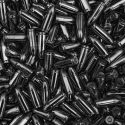Hold on! Don’t be misguided by these cute, big eyes. This small, fuzzy creature can kill you in minutes. Many lovely-looking animals in the wild won’t hesitate to attack you if you give them a chance. This is why we put together a list of the five cutest animals that are most likely to kill you. Don’t let them fool you, my friend. You’re not safe.
The world is full of ferocious, scary beasts that can tear you apart with a single blow or bite. But other creatures are more deceptive about their deadly ways. If they bite you, some small, fluffy, cute animals can rot your flesh, poison you, or make you bleed to death. Today we’ve compiled the five most amazing stories of cute creatures that turned deadly, so you can survive if you end up face-to-face with them.
How can a toothless animal make you bleed to death? What thumb-sized creature can kill 10 human adults? What time of year is a swan most likely to kill you?
Number 5: Giant Anteaters
These giant mammals live in South and Central America. They can be 2.4 m (8 ft) long from tail to snout and weigh up to 63.5 kg (140 lb). Although these huge mammals have no teeth and feed only on ants and termites, they have massive, strong claws to break anthills. But if they feel threatened, they use their claws to fight. In 2012, a Brazilian man went hunting in the forest with his sons. His dogs found a giant anteater and cornered it. The beast stood up to fight them. Fearing he might shoot one of his dogs by mistake, the hunter took his knife to kill the beast.
But the animal grabbed him with its front legs and began stabbing him with its claws. The hunter’s sons freed him, but it was too late. Their father bled to death on the spot. If you come face-to-face with this peaceful-looking beast, make no mistakes. This is a powerful wild animal. If it stands on its hind legs, back away slowly and leave it alone. They are a vulnerable species and the most endangered mammal in Central America. So don’t mess with them.
Number 4: Leopard seal
Don’t be fooled by their adorable, smiling faces. These huge mammals are fierce, skilled predators. Living in Antarctic and sub-Antarctic waters, they can grow up to 3.5 m (11.5 ft) long and weigh up to 380 kg (840 lb). They use their long, sharp teeth and powerful jaws for hunting fish, squid and even other seals. Also, they are no strangers to taking down humans. In 2003, British marine biologist Kristy Brown was diving off the Antarctic Peninsula when a leopard seal attacked her.
Sadly, the 28-year-old did not survive. This incident triggered researchers to study 30 years of leopard seals and human interactions. The study found that most attacks have occurred at the ice’s edge, perhaps because the leopard seals mistook humans for penguins. So, if you explore Antarctica, keep your distance from the ice edge and avoid the water altogether.
Number 3: Swan
There is hardly a more graceful and beautiful species of waterfowl than swans, but they are also powerful birds. At 1.5 m (60 in) tall, no waterfowl can run, swim or fly as fast as it can, or be as aggressive. They will do anything to protect their mates or babies. Yes, these beautiful swans will kill.
In April 2012, Anthony Hensley, 37, was kayaking on a pond outside Chicago when a swan began attacking him. His kayak capsized, and he fell into the water. The angry swan continued attacking him, preventing him from swimming to shore. He drowned.
Retired Oxford ornithologist Chris Perrins told the BBC that between April and June, the nesting season, swans defend their nests violently. So if you’re kayaking, swimming or even strolling near a body of water in spring and you see a swan, you should find somewhere else to hang out.
Number 2: Poison dart frog
These tiny, beautiful frogs live in South and Central American wetlands. At 2.5 cm (1 in) long, they’re smaller than most adults’ thumbs, but some of these frogs carry enough venom to kill 10 human adults. If their poison enters your bloodstream, it will block the nerve signals that tell your muscles to relax. That can cause your heart to fail in less than 10 minutes. So, if you find one of these colorful and cute amphibians, don’t even touch them. Cover any wounds you can have, and stay alert. Remember that their striking appearance is a warning to potential predators.
Number 1: Slow loris
Look at this cuddly little creature. Do you feel like petting it? Wrong move. These tiny South Asian mammals con be only 25 cm (10 in) long, but they are the only family of venomous primates. A gland behind their arms produces a potent toxin, which combines with their saliva and creates a venom. It’s toxic enough to rot human flesh, and it causes an anaphylactic shock.
In 2012, George Madani picked up a slow loris in Borneo. It bit his finger. In just minutes, his face swelled severely, and he started feeling shortness of breath and could barely walk. Fortunately, he managed to get medical attention and survived. But never be confident with these creatures. They are extremely territorial and will attack if they feel threatened.
Not surprisingly, it is illegal to keep slow lorises as pets in most parts of the world. Some people do it, though. You can’t imagine the animals some people put in their homes. Want to know the story of a pet camel in Texas and why it killed two people?
Sources
- “Slow Loris | Primate“. 2021. Encyclopedia Britannica.
- “Poison Dart Frogs | National Geographic“. 2021. Animals.
- “Are Leopard Seals Dangerous?“. 2021. Nhm.Ac.Uk.
- “Who, What, Why: How Dangerous Are Swans?“. 2012. BBC News.
- “Don’t You Know That You’re Toxic? | Poison Dart Frog | Aquarium Fact Sheet | Berkshire Museum“. 2020. Berkshire Museum@Home.

















